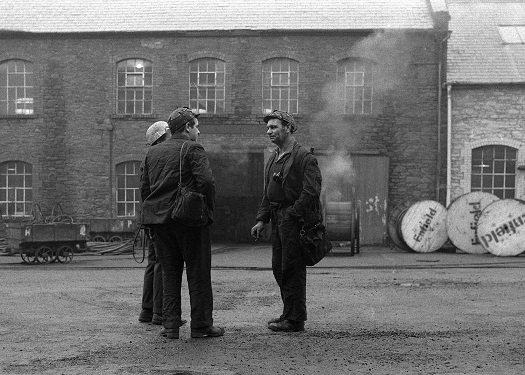 The fiirst known reference to lead mining in the Llantrisant area after the Roman period was in 1262 with the extent of the estate of Gilnert de Dlare who mentions the 10/ paid in respect of lead mining which was possibly near Broviskin.
The fiirst known reference to lead mining in the Llantrisant area after the Roman period was in 1262 with the extent of the estate of Gilnert de Dlare who mentions the 10/ paid in respect of lead mining which was possibly near Broviskin.
However, no further evidence remains of any further mining until the 16th century when Leland said of “There is now Yron made in one of these parkes named Gliog.”
A John Ellis was sent by the King to search for lead in the park of Clun. He began work in May 1530 with eleven miners and paid 6d a day for “diffing and delving to the veins of lead ore”. They found three deposits and opened three mines, called St Peter, St John and St Thomas.”
By 1540 it was granted to William Kendall of Launceston with the right to mine all metals in a radius of three miles of the Clun,
In the late 1500s the Earl of Pembroke granted leases for exploitation of minerals in the lordship. We know that by the turn of the 17th century there is a note in Lhuyd’s Parochialia which says “Coale works at Cystelle Cwm Pedwaredd, Glin, Gilvaeth, Rhy Seision, Rhys Garn and in diverse parts of the Traen one of the hamlets of Llantriessent. Iron mines under the town of Llantrissent at Pont y Velin newidd, Quarrys of fine paced stone and tyle etc. all the Kaire and Erw Heere and abounding with Limestone."
This was the peak of lead mining in the Park of Clun and the amount of pollution is mentioned by diarist William Thomas in February 1764: “Was buried in Lantrissent a young man from ye fever and about 200 have been buried in Llantrissent this 13 months last past as young Dr Bates reporteth…all yt die ar ym this side of yet Town and many of ym belonging to ye mine pits, except the mine pits were stoped the most of yet town and parts about will die. But in vain when God’s sweitch is beating.”
The Trahernes of Castellau dominated the operations in the parks. By 1717 Edmund Traherne leased the upper and lower parks to dig for lead, iron, coal, copper and tin and quarry for stone and slate.
William Cook of Margam worked the mines and by 1823 it was run by John Barker for the Bute Estate. The opening of the Bute and Mwyndy iron ore mines in 1852 and 1853 respectively had a huge impact on the small hamlet of New Mill, to become Miskin. The name change was brought about by Judge Gwilym Williams, and was taken from the medieval commote of Miskin.
By the 1870s several ironstone mines are evident to the south of Llantrisant. Many immigrant Cornish miners moved to the area following the depressed copper mining of their own county. The sinking of shafts to work the iron ore and the development of the coal industry was an obvious attraction to skilled miners whose futures in Cornwall looked bleak following the collapse of the copper mining industry.
The Llantrisant Tin Plate works opened in 1872. As well as developing around the Talbot Arms, further building work began to occur further afield. Loftus Iron Company of Middlesborough invested heavily in the local colliery. However the venture was unsuccessful.
Page 1 of 2






